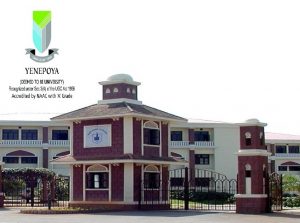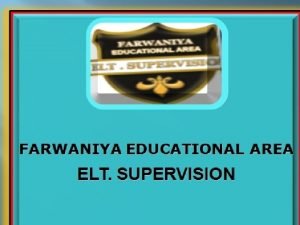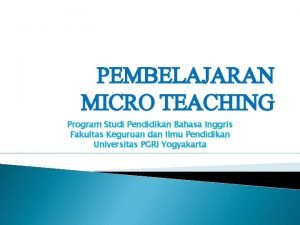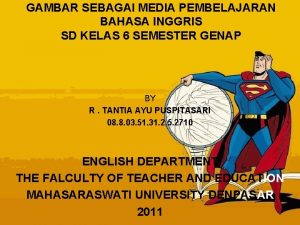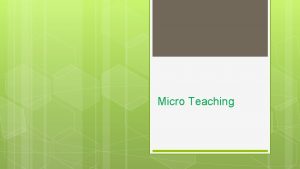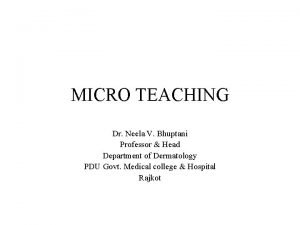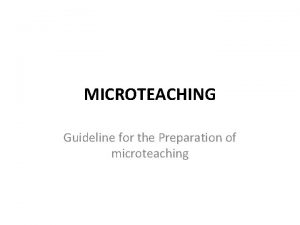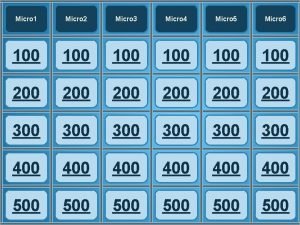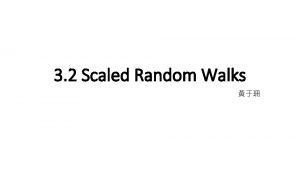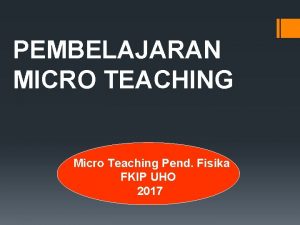MICROTEACHING DEFINITIONS OF MICRO TEACHING A scaled down










- Slides: 10

MICROTEACHING

DEFINITIONS OF MICRO- TEACHING • A scaled down teaching encounter in class size and class time. • A system of controlled practice that makes it possible to concentrate on specified teaching behaviour and to practices teaching under controlled conditions.

DEFINITIONS OF MICROTEACHING • A teacher education technique which allows teachers to apply clearly defined teaching skills to carefully prepared lessons in a planned series of 5 -10 minutes encounter with a small group of real students, often with an opportunity to observe the result on video-tape.

THE BEGGININGS OF MICRO- TEACHING • Stanford University developed Microteaching in 1963 as a part of an experimental program. • It was viewed as feasible in making student- teachers aware of the realities of teaching.

PURPOSES OF MICRO- TEACHING There are two purposes of Microteaching: (a) for student- teachers to develop teaching skills under controlled conditions without risking the learning of the pupils (b) for experienced teachers to examine and refine their techniques

PHASES OF MICRO- TEACHING According to J. C. Clift and others, microteaching procedure has three phases: 1. Knowledge acquisition phase 2. Skill acquisition phase 3. Transfer phase

MICROTEACHING CYCLE

COMPARISONS BETWEEN MICROTEACHING AND TRADITIONAL TEACHING Microteaching • • Objectives are specified in behavioural terms. Class consists of small group of 5 -10 students. The teacher takes up one skill at a time. Duration time for teaching is 5 -10 minutes. There is immediate feed-back. Teaching is carried on under controlled situation. Teaching is relatively simple. The role of supervisor is specific and well defined to improve teaching. • Patterns of class room interaction can be studied objectively.

COMPARISONS BETWEEN MICROTEACHING AND TRADITIONAL TEACHING Traditional Teaching • Objectives are general and not specified in behavioural terms. • Class consists of 40 -60 students • The teacher practices several skills at a time. • The duration is 40 -50 minutes • Immediate feed-back is not available • There is no control over situation • Teaching become complex • The role of the supervisor is vague • Patterns of classroom interactions cannot be studied objectively

Thank you! & God bless : )
 Macro teaching is a scaled down teaching
Macro teaching is a scaled down teaching Which
Which Components of skill of blackboard writing
Components of skill of blackboard writing Advantages of microteaching
Advantages of microteaching Micro lesson plan
Micro lesson plan Micro teaching cycle
Micro teaching cycle Micro teaching english lesson plan
Micro teaching english lesson plan Gambar pelajaran bahasa inggris
Gambar pelajaran bahasa inggris Disadvantages of micro teaching
Disadvantages of micro teaching Advantage of micro teaching
Advantage of micro teaching Micro teaching cycle in hindi
Micro teaching cycle in hindi

